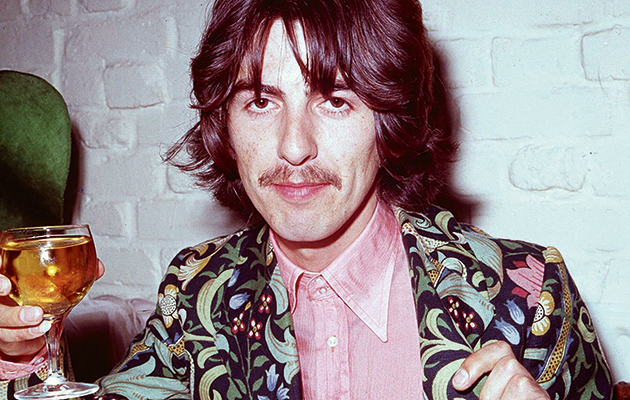By the middle of 1966, the King’s Road boutiques were becoming more and more popular, with Top Gear and Countdown, founded by James Wedge and model Pat Booth, as hip as Granny’s. “It happened really quickly,” explains Wedge. “On a Saturday, so many people used to come that I had to stand outside, like a guy outside a cinema, allowing only two people in after two people came out – otherwise it was just too crowded in there.”
“It was extraordinary. Granny’s was a sort of parade ground,” says Waymouth. “People who flew in from America, they’d make it one of their stops. I remember Andy Warhol and his troupe coming in at one time, The Beatles came in often, and the Stones. Brigitte Bardot’s sister, Mijanou, used to take our clothes back to her boutique in Paris. Sometimes she brought her sister with her, which was always very pleasant. At other times there was someone like Yul Brynner or Barbra Streisand or Ursula Andress. Brian Jones and John Lennon used to come in after hours; we used to open the shop especially.”
Notably, George Harrison bought a tailored green jacket featuring a classic William Morris Golden Lily design – only around 20 were ever produced by Granny’s, but other owners included Nigel Lesmoir-Gordon, Joe Boyd and Dennis Hopper. John Lennon opted for a similar jacket instead sporting Morris’ Chrysanthemum pattern.
“I enjoyed it when Anita Pallenberg and Brian Jones used to come in,” remembers John Pearse. “We had Clapton, Ginger Baker, The Who, Pink Floyd, Hendrix, you name it. And Bardot and Monica Vitti. The Byrds’ drummer [Michael Clarke] fell asleep on the couch, and never went home. Do you remember Blow-Up? Michelangelo Antonioni himself turned up, and he bought this beaded dress that went onto Veruschka when David Hemmings is shooting her.”
“We spent a lot of time in Granny’s,” recalls the Small Faces’ Kenney Jones. “I’ll never forget trying on some green velvet trousers. I thought they looked all right, then the bloke said, ‘Yeah, Jimi Hendrix was in earlier and he tried them on ’n’ all.’ I said, ‘Fuck, get ’em off, I don’t want to get crabs.’ Crabs was the big thing – everybody was getting crabs, and I didn’t want Jimi’s.”
In its first six weeks, the shop made £60,000 in the day’s money, helped by its celebrity clientele and the mystique that had arisen from the dark interior and enigmatic decor. “You had to have nerves of steel to open the door and go in,” laughs Peter Daltrey of London psych group Kaleidoscope, “because the staff were so cool, and it was very intimidating unless you were Mr or Mrs Style yourself. You never knew when you opened the door who was going to be in there.”
Some musicians hit the King’s Road boutiques for more than just clothes, with McCartney taking out the female manager of Countdown for a while, as James Wedge remembers. Granny’s would cash cheques for Syd Barrett, before he became one of the scene’s first casualties. “We knew nothing about mental illness, we thought he was just being eccentric,” remembers Nigel Lesmoir-Gordon. “Before that, Syd had become very dress-conscious and expressive very quickly. Roger Waters and the others just copied him.”
“The kind of people who came to Granny’s had a habit of walking down the King’s Road, ending up at Granny’s in the late afternoon,” says Joe Boyd, “where there’d always be a crowd of people. By the time Sgt Pepper came out, you could walk down the King’s Road on a Saturday and hardly see a dark suit, they just evaporated.”
Boyd had begun his UFO club in late ’66, and had noticed the crowd’s clothes shifting from white shirts and khaki trousers to more colourful and diaphanous items. While Pink Floyd, whose debut single, “Arnold Layne”, was produced by Boyd, were free to indulge in the fineries of the King’s Road, other groups were warned off hippy threads by their labels, wary that psychedelia was a passing fad.
“We had a gangster image because of the Roaring ’20s and our name,” says Chris Joe Beard of The Purple Gang. “Joe Boyd took us down to Granny’s for a shoot. That’s when McCartney arrived in a burgundy jacket. He’d got a droopy moustache, and suede shoes on that matched the jacket. We were being encouraged by [Transatlantic boss] Nat Joseph to stay in our gangster gear – but when you see the gear in Granny Takes A Trip, you don’t want to be a bloody gangster, do you? So I bought a silver shirt with a long collar and a jacket like McCartney’s, then a paisley shirt with no collar at all.”
The Purple Gang’s first single, produced by Boyd and released later in 1967, was even titled “Granny Takes A Trip”, although musically it had more in common with jug-band folk than the bright sounds of the lysergic dawn. Other musicians, however, were more immune to the psychedelic revolution, or indeed actively parodied it.
“It all got a bit flower-powery,” says Neil Innes, “and that’s when the Bonzos started sending it up. Vivian [Stanshall] had trousers made of greengrocers’ grass, and a sky-blue tunic with clouds sewn onto it. You could buy these horrible flares with roses on, so I wore them with a red military tunic when we played with Cream at the Saville, so I could say it was ‘war and peace’.
I had a military suit made of Noddy material. I had a canvas suit made, and painted it in oils. It’s a parody of Constable’s Boat-Building Near Flatford Mill, but instead of a boat I’ve got him chipping away at a wooden Cadillac. I also got some canvas shoes and painted them like bare feet, with very realistic toes. Roger [Ruskin Spear, Bonzos multi-instrumentalist] went berserk – he started wearing a chimney head, which used to explode; and he had a very long arm. It really went art school, then, with no rules… It was more Dada than anything.”



